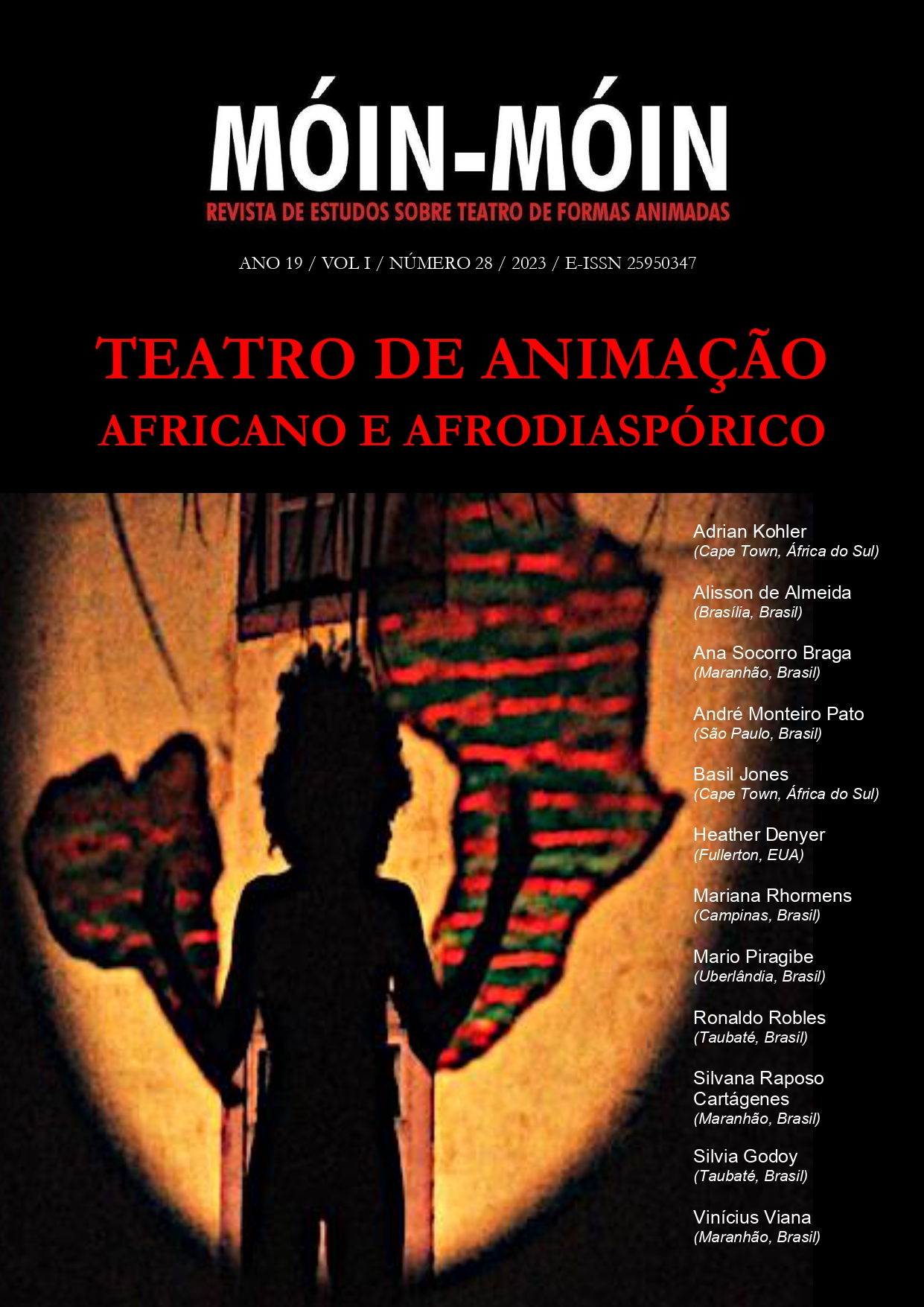A mask to be enchanted: the afro-maranhense baiar and the in(corporation) on scene
DOI:
https://doi.org/10.5965/2595034701282023167Keywords:
Body, Mask, Tambor de mina, CharacterizationAbstract
This article proposes to articulate an analysis of the creative process of the artist Vinicius Viana in his process of visual composition, when he masks himself inspired by the bodies that dance the Tambor de Mina do Maranhão, within a process in which the union of the creative body is established and baiar for the sacred of the terreiros. The experiences shared here permeate the possible place of the body mask, in a bridge with the visuality that transits between society and the sacred, matter and the invisible, between contemporary and tradition, which timelessly relate the connection between Africa and Brazil, and that penetrate the ancestress roots of an artist's dancer and his writing.
Downloads
References
CASCUDO, Luís da Câmara. Dicionário do Folclore Brasileiro. São Paulo: Global, 11. Edição, 2001.
CONTIN, Claudia. Madeira, couro, cores e carne: histórias entre Commedia dell’Arte e máscaras do mundo. In: BELTRAME, Valmor Níni; ANDRADE, Milton (org.) Teatro de Máscaras. Florianópolis: UDESC, 2010.
COSTA, Felisberto Sabino da. A máscara e a formação do ator. In: Revista Móin-Móin; v. 01, n, 1. Jaraguá do Sul: SCAR/UDESC, 2005.
FERRETTI, Mundicarmo. Encantados e encantaria do Tambor de Mina. In: Boletim da Comissão Maranhense de Folclore, v. 42, p. 15-16,2008.
FERRETTI, Sergio F. Querebentã de Zomadonu. Etnografia da Casa das Minas. São Luís: EDUFMA, 2ª Edição,1996.
MESQUITA, Olênia Aidê Leal de. Significações Culturais e Simbólicas sobre o corpo do balé folclórico da Bahia: Uma herança Sagrada para a educação Física. Dissertação (Mestrado em Educação Física) - Centro de Ciências da Saúde, Universidade Federal do Rio Grande do Norte, p.149. 2018.
MIRANDA, Maria Brígida de. O afro-dionisíaco no teatro-dança em São Luís. Crítica teatral: (out. 2014). São Luís: II Festival de Teatro Ponto de Vista, 2014.
PEREIRA, Ipojucan. Corpo/objeto: O “mascaramento” na cena contemporânea brasileira. In: Revista Móin-Móin; ano 06, n° 7. Jaraguá do Sul: SCAR/UDESC, 2010.
VIANA, Raimundo Nonato Assunção. O bumba-meu-boi como fenômeno estético: corpo, estética e educação. São Luís: EDUFMA, 2013.
Downloads
Published
How to Cite
Issue
Section
License
Copyright (c) 2023 Móin-Móin Magazine - Studies in the Art of Puppetry

This work is licensed under a Creative Commons Attribution 4.0 International License.
The readers are free to transfer, print and use the articles published in the Magazine, as long as there’s explicit mention to the author(s) and to Móin-Móin Magazine - Studies in Theater of Animated Forms and there are no changes on the original work. Any other use of the texts needs to be approved by the author(s) and the Magazine. In submitting an article to Móin-Móin Magazine - Studies in Theater of Animated Forms and have it approved, the author(s) agree to give away, without payments, the following rights to the Magazine: first publishing rights and the license for the Magazine to redistribute this article and its metadata to index and reference services that the editors consider appropriate.
The articles whose author(s) are identified represent the author’s point of view and not the official position of Móin-Móin Magazine. The author(s) commit to always mention the publication in the following way when publishing work in reference to the article published in Móin-Móin Magazine:
“This article was originally published by Móin-Móin Magazine volume (insert the volume), number (insert the number), in the year of (insert year) and can be accessed on: http://www.revistas.udesc.br/index.php/móin"
Plagiarism in any way constitutes an unethical publishing behavior and is unacceptable. Móin-Móin Magazine holds the right to use software or other plagiarism tracking methods to scan the submitted works.
![]()
This journal uses Attribution-NonCommercial 4.0 International– (CC BY NC 4.0).






